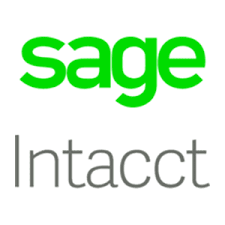
27
JanSage Intacct MICR Check Printing: Configuration, Compliance, and Best Practices
Sage Intacct is a popular accounting software that offers a variety of features to help businesses manage their financial processes. One of these features is the ability to print checks using magnetic ink character recognition (MICR) technology. This allows for faster, more accurate processing of checks and reduces the risk of fraudulent activities.
If you are interested in setting up MICR check printing in Sage Intacct, there are a few important things to consider. In this article, we’ll discuss the configuration requirements, compliance considerations, and best practices for Sage Intacct MICR check printing.
Configuration Requirements
Before you can start printing checks with MICR technology in Sage Intacct, there are a few configuration requirements that must be met.
1. MICR Printer
First and foremost, you will need a printer that is capable of printing MICR checks. These printers use special toner that contains iron oxide particles, which allows for the magnetic recognition of the check data. It is important to note that not all printers are able to print MICR checks, so be sure to check your printer’s specifications before attempting to print MICR checks.
2. Printer Settings
Once you have a MICR printer, you will need to adjust the printer settings in Sage Intacct. This can be done by going to the “Print Settings” section in the Cash Management module. Here, you will need to select your MICR printer as the Default Check Printer.
3. MICR Fonts
Sage Intacct also requires the use of specific MICR fonts when printing checks. These fonts are MICR E13B and CAR-15 MICR, which are available for purchase from various font providers. Once you have downloaded the MICR fonts, you will need to install them on your computer and select them as the Default MICR Font in the Check Printing setup.
Compliance Considerations
In order to ensure that your MICR checks are compliant with banking regulations, there are a few additional considerations to keep in mind.
1. Document Layout
The layout of your checks must comply with the ANSI X9.100-160-1 standard for MICR printing. This includes the placement of the MICR line, signature line, and any other required information. The standard also specifies the minimum and maximum font sizes for the MICR line and the use of a secure number font for the check number.
2. Check Security
The security of your checks is also important for compliance purposes. This includes using MICR toner that is difficult to alter, as well as implementing security features such as watermarks, microprinting, and other security measures.
3. Record Keeping
It is important to maintain accurate records of all check printing activity, including check numbers, amounts, and the date they were printed. This information will be needed for bank reconciliation purposes and in case of any discrepancies.
Best Practices for MICR Check Printing
Here are a few best practices to follow when printing MICR checks in Sage Intacct:
1. Test Printing
Before printing a large batch of checks, it is recommended to do a test print of a few checks to ensure that everything is set up correctly and that the checks will be printed accurately.
2. Audit Trail
Sage Intacct provides an audit trail feature that allows you to track any changes made to your checks. This is important for maintaining accurate records and identifying any discrepancies.
3. Security Measures
As mentioned earlier, it is important to use secure MICR toner and implement other security features on your checks to prevent fraud.
4. Regular Maintenance
Be sure to regularly check your MICR printer and toner to ensure they are in good working condition. Replace the MICR toner as needed to prevent faded or unreadable MICR lines on your checks.
5. Reconcile Checks
It is important to reconcile your printed checks with your bank statements to ensure that all checks were processed correctly and to identify any discrepancies.
Conclusion
Setting up MICR check printing in Sage Intacct requires careful configuration, compliance considerations, and best practices. By following these guidelines, you can ensure that your MICR checks are printed accurately, securely, and in compliance with banking regulations. This will help to streamline your check printing process and reduce the risk of fraud.